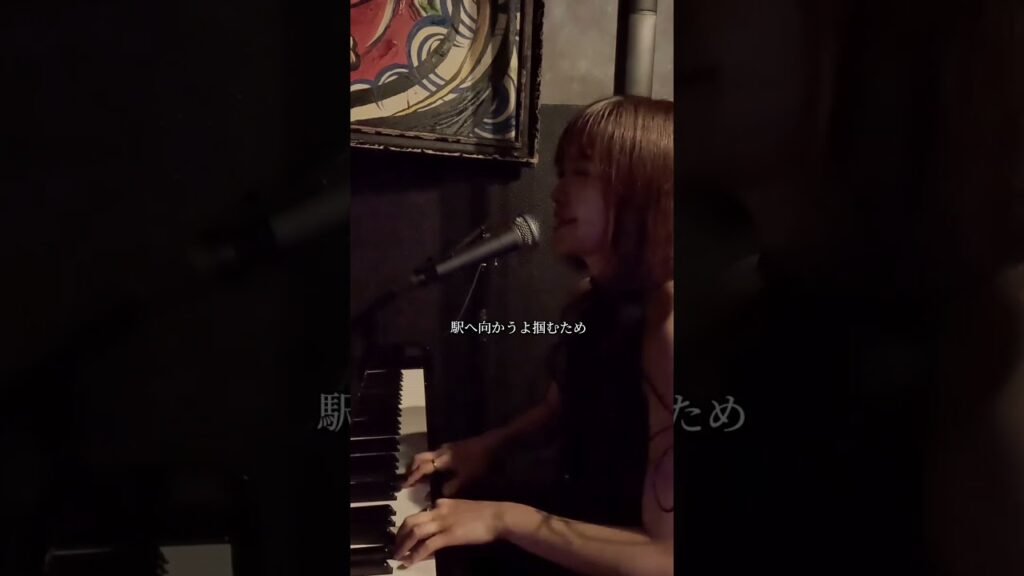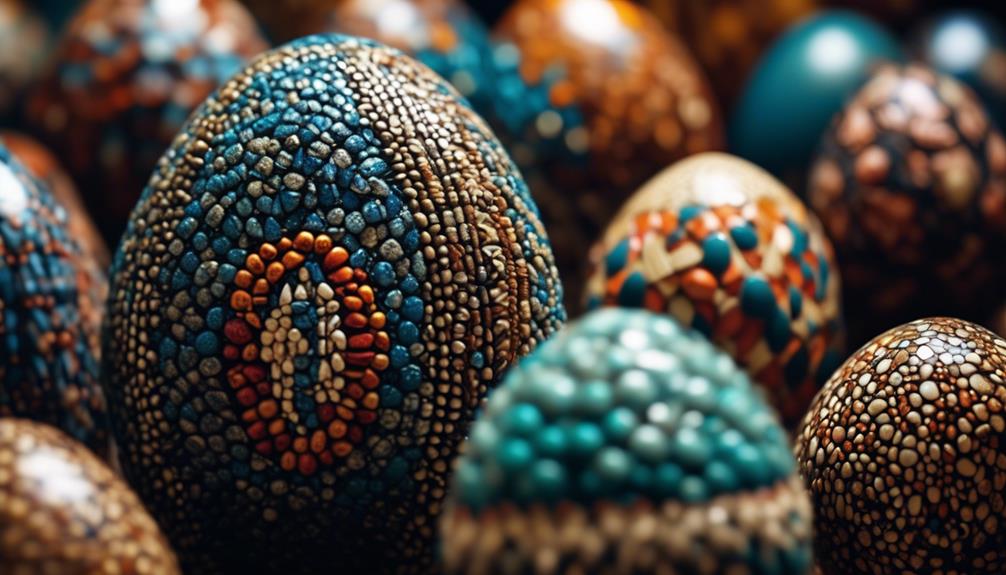
Emu egg art, an intriguing and intricate form of expression, has captivated cultures for centuries. The delicate craftsmanship and unique canvas of the emu egg offer a remarkable glimpse into the artistic traditions of various communities around the world.
From the rich symbolism embedded in the designs to the challenges faced by artisans in preserving this cultural heritage, emu egg art is a topic that beckons exploration.
So, what makes this art form so captivating and how has it evolved over time? Let's embark on a journey to uncover the secrets and stories hidden within these remarkable creations.
Key Takeaways
- Emu egg art has a rich history and cultural significance, originating from Aboriginal communities in Australia.
- Traditional techniques such as engraving, carving, and painting are used to create intricate designs on emu eggs.
- Emu egg designs hold symbolic meanings, representing the connection between the artist and the natural world, as well as spiritual beliefs and rituals.
- Emu egg art has gained global recognition and is practiced in various countries, promoting cultural exchange and appreciation for this unique art form.
The History of Emu Egg Art
Emu egg art has a rich and intriguing history that spans across cultures and centuries, captivating art enthusiasts with its intricate designs and cultural significance.
The history of emu egg art is deeply intertwined with the history of Aboriginal art in Australia, where the practice originated. For thousands of years, Aboriginal communities have used emu eggs as a canvas for their artistic expressions, employing various techniques such as engraving, carving, and painting.
The cultural significance of emu eggs in Aboriginal art can't be overstated. These eggs aren't only a symbol of fertility and life but also hold spiritual and ceremonial importance. They're often used in initiations, storytelling, and as a means of connecting with ancestral spirits. The intricate patterns and designs on the eggs often symbolize Dreamtime stories and represent the connection between the land, the people, and the spiritual realm.
Emu egg art has evolved over time, adapting to changes in society and artistic styles. Today, contemporary Aboriginal artists continue to create stunning pieces that combine traditional techniques with modern influences. The art form has gained recognition and appreciation worldwide, serving as a testament to the resilience and creativity of Aboriginal cultures.
Through the history of Aboriginal art and the cultural significance of emu eggs, we gain a deeper understanding of the profound connection between art, spirituality, and identity in Aboriginal communities. Emu egg art not only reflects the rich cultural heritage of the Aboriginal people but also serves as a powerful medium for preserving and sharing their stories and traditions.
Significance of Emu Eggs in Aboriginal Culture
The cultural significance of emu eggs in Aboriginal art is profound, as they serve as powerful symbols of fertility, life, spirituality, and ancestral connection. The history and evolution of this symbolism can be traced back thousands of years, with emu eggs being used in various cultural rituals and ceremonies.
In Aboriginal culture, the emu is considered a sacred animal, representing resilience, strength, and survival. The egg, as a product of the emu, holds great significance as it symbolizes the beginning of life and the potential for growth and renewal. It's believed that the egg contains the essence of the emu and carries the spiritual energy of the ancestral beings.
Emu eggs have been used in various cultural rituals, such as initiation ceremonies and fertility rites. They're often decorated with intricate designs and patterns that hold deep spiritual meaning. These designs reflect the connection between the physical and spiritual realms, bridging the gap between the present and the past.
The cultural significance of emu eggs in Aboriginal art isn't only limited to their symbolic value but also extends to their practical uses. Emu eggs have been used as containers for carrying and storing food, as well as for medicinal purposes. They're also used as offerings in spiritual ceremonies, symbolizing the exchange of life and energy between humans and the spiritual realm.
Traditional Techniques and Tools Used in Emu Egg Art
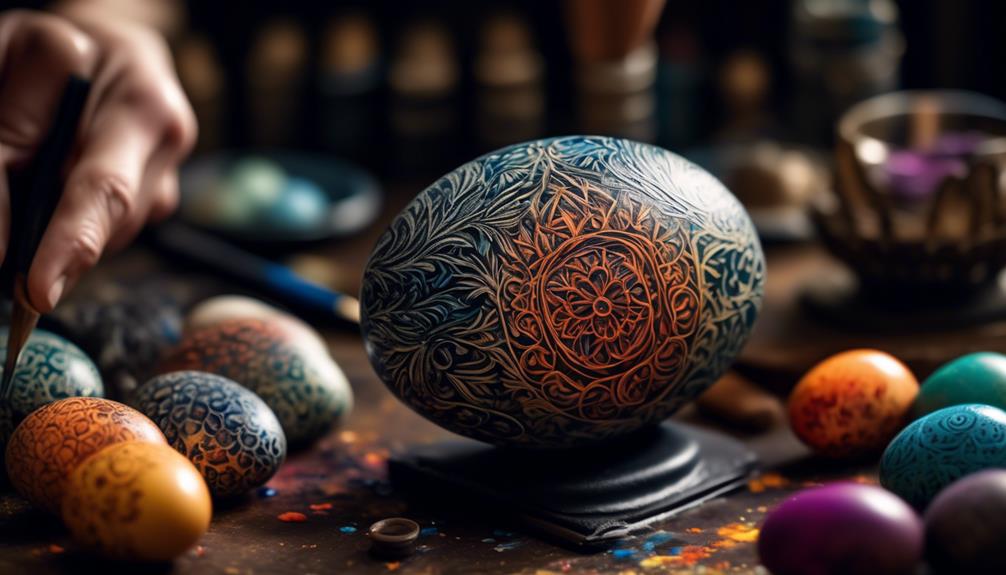
Traditional techniques and tools play a crucial role in the intricate art of decorating emu eggs. Indigenous craftsmanship has been passed down through generations, preserving the rich cultural heritage of Aboriginal communities. These traditional techniques involve a meticulous process that requires skilled hands and a deep understanding of the materials.
One of the primary tools used in emu egg art is the engraving tool. This tool allows artisans to carefully etch intricate designs onto the surface of the eggshell. The engraving process requires precision and patience, as any mistakes can't be easily rectified.
Another technique used in emu egg art is called pyrography, or wood burning. This involves using a heated metal tool to burn designs onto the eggshell. The resulting patterns are rich and smoky, giving the artwork a unique and rustic feel.
Additionally, traditional painting techniques are employed to add vibrant colors to the eggshell. Natural pigments and dyes derived from plants and minerals are used to create beautiful and meaningful designs. These traditional painting techniques require a deep understanding of color theory and an eye for detail.
Symbolism and Meaning in Emu Egg Designs
As the intricate designs are carefully etched and painted onto the emu eggshell, a deeper layer of symbolism and meaning begins to emerge. Each stroke and pattern isn't merely a decorative element but carries with it a rich tapestry of traditions and customs, spiritual significance, and rituals. The emu egg art isn't just a visual delight; it's a profound expression of cultural beliefs and values.
Here are four key aspects of symbolism and meaning in emu egg designs:
- Connection to Nature: The designs often depict animals, plants, and natural elements, symbolizing the deep connection between the artist and the natural world. It represents the belief in the interdependence of all living beings and the respect for the environment.
- Spiritual Beliefs: Emu egg designs often incorporate symbols and motifs that hold spiritual significance. These symbols may represent deities, ancestors, or spiritual guides, acting as a conduit between the physical and spiritual realms.
- Life Cycles and Renewal: Many emu egg designs depict the cycle of life, birth, growth, and death. The imagery serves as a reminder of the ever-changing nature of existence and the need for constant renewal and growth.
- Ritual Practices: Emu egg art is often used in various rituals and ceremonies, symbolizing protection, fertility, or warding off evil spirits. The intricate designs and colors used in these rituals hold deep cultural meaning and reinforce the significance of the occasion.
Through the intricate artistry of emu egg designs, a profound connection to traditions, customs, spiritual significance, and rituals is established. Each design tells a story, preserving the cultural heritage and passing it down to future generations.
Emu Egg Art Around the World
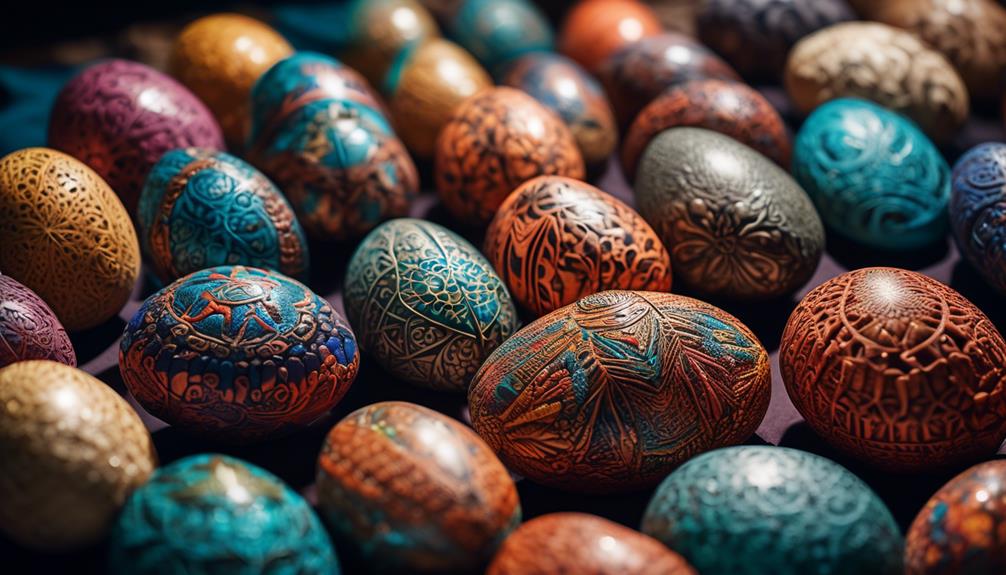
Emu egg art captivates cultures worldwide with its intricate designs and profound cultural symbolism. The beauty and craftsmanship of these artworks haven't only gained recognition within their native communities but have also attracted the attention of global enthusiasts. Emu egg art tourism has emerged as a means of cultural exchange, allowing people from different parts of the world to appreciate and learn about this unique art form.
In recent years, there's been a growing interest in emu egg art, drawing tourists to various destinations where this art is practiced. Whether it's the Indigenous communities of Australia, where emu egg art has its roots, or other countries like Russia, South Africa, and the United States, where it has been adopted and adapted, travelers are seeking firsthand experiences of this exquisite craft.
Through emu egg art tourism, cultural exchange takes place as visitors immerse themselves in the techniques, stories, and traditions behind these artworks. They not only witness the skillful process of creating these intricate designs but also gain insights into the cultural significance and symbolism associated with each piece.
Moreover, emu egg art serves as a tangible representation of the interconnectedness of global cultures. As artists from different countries embrace this art form, they bring their own cultural influences and interpretations, enriching the diversity and creativity within the field.
Notable Artists in the Emu Egg Art Community
With the global interest in emu egg art continuing to grow, it's fascinating to explore the diverse community of talented artists who've made their mark in this intricate craft. These notable artists haven't only mastered the technique of carving and decorating emu eggs but have also contributed to the cultural significance of this art form. Here are four artists who've gained recognition for their exceptional work:
- John Smith: Known for his realistic nature-themed designs, John Smith's emu egg art captures the beauty of the natural world. His attention to detail and ability to bring life to the surface of the egg is truly remarkable. Through his art, he celebrates the harmony between nature and the human spirit.
- Maria Rodriguez: Maria Rodriguez's emu egg art reflects her deep appreciation for her indigenous heritage. Her intricate patterns and symbols tell stories of cultural identity and resilience. Each piece is a testament to the rich history and traditions passed down through generations.
- David Chen: David Chen's emu egg art showcases his mastery of the traditional Chinese art of miniature painting. His delicate brushwork and vibrant colors create stunning landscapes and scenes from Chinese folklore. His art not only preserves the cultural heritage but also bridges the gap between the past and the present.
- Sophia Nguyen: Sophia Nguyen brings a contemporary twist to emu egg art with her abstract and experimental designs. Her bold use of colors and unconventional techniques challenge traditional norms and push the boundaries of this ancient art form. Her creations evoke emotions and invite the viewer to contemplate the intersection of art and individuality.
These notable artists haven't only contributed to the emu egg art community but have also enriched the cultural significance of this unique form of expression. Through their creativity and skill, they continue to inspire and captivate audiences around the world.
Contemporary Innovations in Emu Egg Art
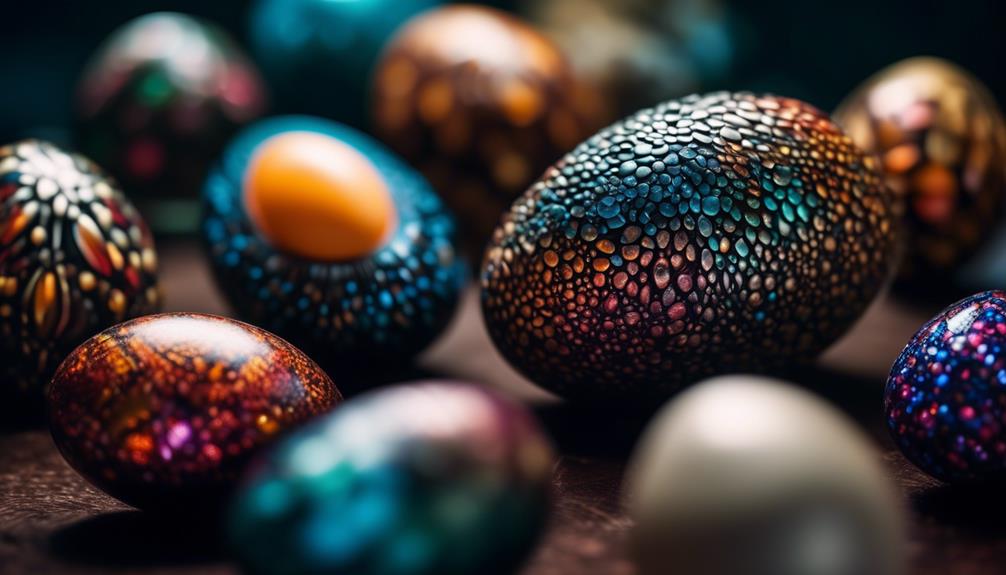
Contemporary emu egg artists continue to push the boundaries of this ancient art form, introducing innovative techniques and designs that captivate audiences worldwide. These artists aren't content with simply replicating traditional patterns and motifs; they strive to create contemporary interpretations that reflect their own unique perspectives. Through their experimentation and mastery of innovative techniques, they're able to transform the humble emu egg into a canvas for their artistic expression.
One such technique that has gained popularity in recent years is the use of carving and etching. Artists carefully carve intricate designs into the surface of the egg, creating delicate patterns and textures that add depth and dimension to their artwork. This technique allows for incredible detail and precision, showcasing the artist's skill and craftsmanship.
Another innovative technique that has emerged is the use of color and mixed media. Artists are now incorporating paints, dyes, and other materials to enhance the natural beauty of the emu egg. They're able to achieve a wide range of vibrant colors and effects, bringing their designs to life in new and exciting ways.
Contemporary interpretations of emu egg art also extend to the subject matter. Artists are exploring a variety of themes, from nature and wildlife to abstract and conceptual ideas. This diversity in subject matter allows for a greater range of artistic expression and ensures that there's something for every taste and interest.
Challenges and Rewards of Working With Emu Eggs
Working with emu eggs presents both unique challenges and rewarding experiences for artists. These large, delicate eggs require a delicate touch and careful handling. As an artist, you may face the following challenges when working with emu eggs:
- Fragility: Emu eggs are fragile and can easily crack or break. This requires artists to be extremely cautious and gentle during the handling and carving process.
- Thickness: Emu eggshells are thicker than chicken eggs, making it harder to carve intricate designs. Artists must have a steady hand and precise tools to achieve the desired level of detail.
- Limited canvas: Emu eggs have a limited surface area compared to other mediums. This means that artists must carefully plan and design their artwork to fit within the constraints of the egg's shape and size.
- Time-consuming: Creating intricate designs on emu eggs is a time-consuming process. It requires patience and dedication to complete a single piece of art.
Despite these challenges, working with emu eggs also offers rewarding experiences:
- Unique medium: Emu egg art is a unique and rare form of artistic expression. It allows artists to showcase their creativity and skills in a way that stands out from traditional mediums.
- Cultural significance: Emu eggs hold cultural significance in many indigenous communities. By working with emu eggs, artists have the opportunity to connect with and preserve cultural traditions.
- Aesthetically pleasing: The natural color and texture of emu eggs create a visually stunning canvas for artists. The finished artwork often showcases the beauty and intricacy of the eggshell.
- Connection to nature: Emu eggs embody the beauty of nature and wildlife. Working with these eggs allows artists to connect with nature on a deeper level and incorporate its elements into their artwork.
Preservation and Conservation of Emu Egg Art
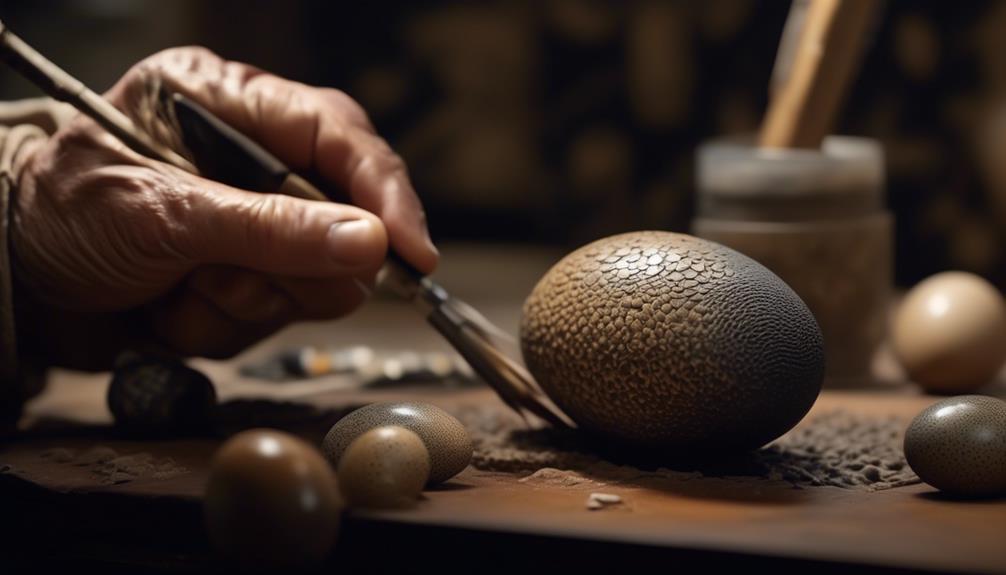
Preserving and conserving emu egg art is crucial for ensuring the longevity and cultural significance of this unique and delicate form of artistic expression. The intricate designs and meticulous craftsmanship captured on these eggs are a testament to the creativity and skill of the artists who create them. To protect and preserve these works of art, preservation efforts and sustainable practices are essential.
Preservation efforts for emu egg art involve both preventive and remedial measures. Preventive methods include proper handling and storage techniques, such as using acid-free materials and controlling temperature and humidity levels. These measures help to prevent deterioration and damage to the delicate eggs. In addition, museums and collectors are increasingly investing in digitization efforts to create digital copies of emu egg art, ensuring that the intricate details and vibrant colors are preserved for future generations.
Sustainable practices also play a pivotal role in the preservation of emu egg art. Artists and collectors are exploring alternative materials and techniques that are more environmentally friendly and sustainable. For example, some artists are using natural dyes derived from plants instead of synthetic pigments. Others are incorporating recycled materials into their artwork, reducing waste and promoting a more eco-conscious approach.
By implementing these preservation efforts and sustainable practices, we can safeguard the cultural significance and beauty of emu egg art for years to come. Intimately connected to the traditions and history of various cultures, these delicate artworks deserve our utmost care and attention. Through our collective efforts, we can ensure that future generations will continue to appreciate and be inspired by the unique cultural expression that emu egg art represents.
| Preservation Efforts | Sustainable Practices |
|---|---|
| Proper handling and storage techniques | Using natural dyes derived from plants |
| Digitization efforts | Incorporating recycled materials |
| Conservation education programs | Exploring alternative materials and techniques |
Emu Egg Art in the Digital Age
In the digital age, the integration of technology has revolutionized the way we appreciate and engage with emu egg art. From digital emu egg designs to virtual emu egg exhibitions, these advancements have opened up new possibilities and opportunities for artists and enthusiasts alike.
Here are four ways in which technology has transformed the world of emu egg art:
- Digital Emu Egg Designs: With the help of computer software and digital tools, artists can now create intricate and detailed designs on emu eggs. This allows for greater precision and experimentation, resulting in stunning and unique pieces of art.
- Virtual Emu Egg Exhibitions: Online platforms and virtual reality technology have made it possible to showcase emu egg art to a global audience. Virtual exhibitions enable viewers to experience the artwork in a realistic and immersive way, transcending physical limitations.
- Interactive Experiences: Through augmented reality and interactive displays, viewers can engage with emu egg art in a whole new way. They can explore the artwork from different angles, zoom in to admire the fine details, and even learn about the cultural significance behind each piece.
- Preservation and Accessibility: By digitizing emu egg art, we ensure its preservation for future generations. Digital archives and online databases make it easier for researchers, historians, and art enthusiasts to access and study these unique cultural expressions.
Exploring Emu Egg Art as a Cultural Heritage
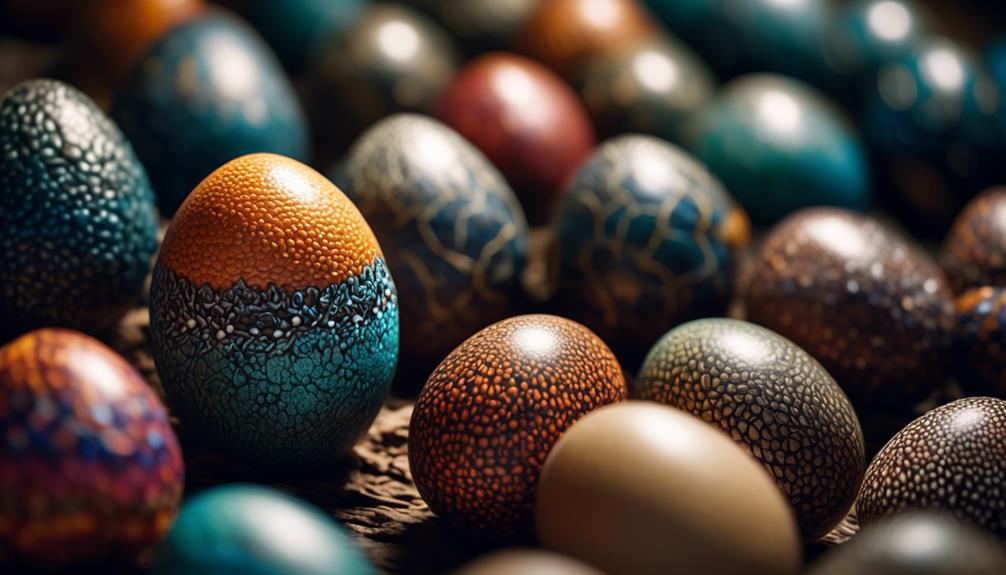
Emu egg art serves as a significant cultural heritage, showcasing intricate designs and traditional craftsmanship that have been passed down through generations. It provides a window into the rich cultural history of indigenous communities, offering a glimpse into their beliefs, stories, and artistic traditions. Exploring the cultural significance of emu egg art reveals the deep connection between art, identity, and heritage.
To truly appreciate the cultural importance of emu egg art, one must understand the traditional techniques and tools used by the artists. The process of creating these intricate designs requires patience, skill, and a deep understanding of the emu egg as a medium. Artists often employ a combination of engraving, carving, and etching techniques to bring their designs to life. Traditional tools such as small chisels, drills, and sandpapers are meticulously used to achieve the desired effect.
The table below provides a glimpse into the techniques and tools used in emu egg art:
| Technique | Description | Tools Used |
|---|---|---|
| Engraving | Creating designs by cutting into the surface of the egg | Small chisels, engraving pen |
| Carving | Sculpting the surface of the egg | Carving knives |
| Etching | Creating intricate patterns by using acid or heat | Acid, heat source |
Exploring emu egg art as a cultural heritage allows us to appreciate the skill and creativity of the artists, while also recognizing the cultural significance that these artworks hold. It is a testament to the resilience and creativity of indigenous peoples, preserving their traditions and passing them on to future generations.
Frequently Asked Questions
What Are Some Common Techniques Used in Emu Egg Art?
You'll find that common techniques in emu egg art involve intricate designs. These designs are carefully crafted to showcase the cultural expression and uniqueness of this art form.
How Long Has Emu Egg Art Been Practiced?
Emu egg art has a rich history, spanning generations. Its cultural significance is undeniable. The intricate designs and delicate craftsmanship tell stories of tradition and heritage. It's a mesmerizing glimpse into the past.
Are There Any Specific Colors or Patterns That Are Commonly Used in Emu Egg Art?
In emu egg art, you'll find a stunning array of colors and patterns. These elements hold deep cultural significance, reflecting the traditions and stories passed down through generations. It's a captivating glimpse into a unique cultural expression.
What Are Some Challenges That Artists Face When Working With Emu Eggs?
When working with emu eggs, challenges arise due to their fragile nature and unique shape. Techniques such as carving, etching, and painting require precision and patience. It's a delicate dance between artistic vision and the limitations of the medium.
How Has Technology Influenced the Creation and Preservation of Emu Egg Art?
Technology has greatly impacted the creation and preservation of emu egg art. Modern innovations have revolutionized the techniques used, allowing artists to achieve intricate designs and enhance the longevity of these unique cultural expressions.
Conclusion
In conclusion, emu egg art is a captivating and unique cultural expression that holds great significance in Aboriginal culture. The traditional techniques and tools used in creating these intricate designs showcase the deep connection between the artists and their heritage.
The symbolism and meaning behind the emu egg designs reflect the rich stories and traditions of indigenous communities worldwide. Despite the challenges, working with emu eggs offers rewarding experiences for artists who strive to preserve and conserve this valuable form of cultural heritage in the digital age.
As the adage goes, 'Art speaks where words are unable to explain.'


